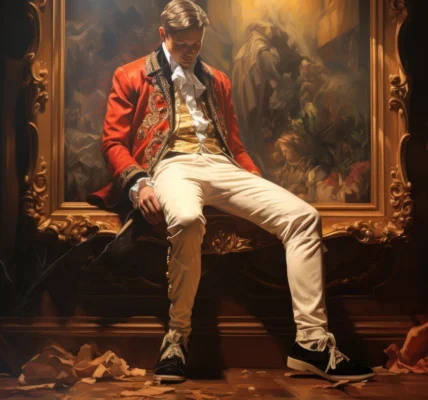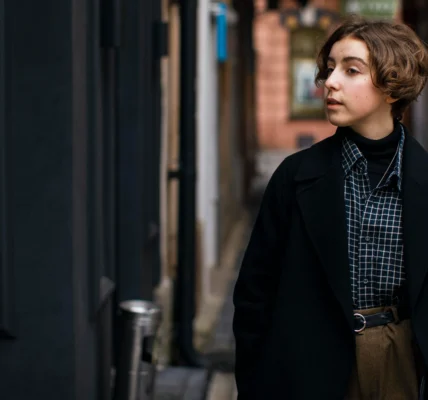Ouji fashion turns daily dressing into a royal adventure. This style which comes out of Japanese streets borrows classy features typical to the times of Europe and re-makes them into delightful, non-gendered garments. It doesn’t rely on the gentle side of Lolita fashion as it is ouji that brings the comforting elements of tailor-made jackets, groovy trousers, and magnificent accessories that look like they were taken right out of a wardrobe of Little Lord Victorian. Consequently, it is a mix that looks both old and new, a clean combination for that one who is eagerly waiting to put a royal stamp on their contemporary life.
From Courtly Inspiration to Global Trend
The roots of ouji fashion trace back to Japan’s Lolita subculture of the 1990s. A fan of the fashion adored the elaborate and delicate side of Rococo and Victorian garments, but at the same time, they wanted a princely alternative other than the cupcake dresses of classic Lolita. The designers came up with a style characterized as Kodona, which then went on to be famous all over the world by the name of ouji, the Japanese word for “prince”. From Harajuku streets to fashion fairs in Europe and North America, the style is now a concept that can be found everywhere and is accepted to be the creative playground for the people of all genders.
Core Elements of a Prince-Inspired Wardrobe
Building an ouji outfit starts with a crisp shirt. Ruffles, jabots, or a high-collared lacy blouse give an impression of formality. Layer a fitted vest or waistcoat over this innermost item to add a touch of nobility to the look. Visit here for inspiration on choosing fabrics and cuts that match your personal style. The hallmark of the bottom section is a pair of knee-length shorts or breeches which are more popularly known as knickerbockers.
A silhouette made up of a tailored jacket, a frock coat, or a military-style blazer is sure to make an impact. Brocade, velvet, and ultra-fine cotton all add a certain richness to the texture, whereas jewel colors, navy, burgundy, and emerald, are used to give it more. Along with this, black and white are still great choices for those who want a little more Gothic in their style.
Accessories carry the final flourish. Imagine such things as pocket watches, top hats, cravats, lace gloves, or sparkling boots. Even if you think about a really subtle thing like a ribbon at the collar or a silver chain, don’t you think it would be pushing an outfit from being just ordinary to princely.

Sub styles and Creative Directions
Ouji fashion thrives on variation. Classic ouji takes after the Victorian court with neutral tones and angular designs. Gothic ouji features dark colours, thick materials, and big hats. Sweet ouji tries to bring the softness back to the style with pinks, light lace, and playful prints. There are a few fans who deliberately mix military or pirate-style details, e.g., brass buttons, sashes, or shoulder straps, to add a bit of drama. Because it is a fluid style, you can start with only one theme and then experiment until you get the right balance of elegance and fun that is your own.
Wearing Ouji Fashion Every Day
Despite its regal roots, ouji fashion can fit everyday life. The subtle style vest combined with tight pants and a simple blouse would be perfect for an average day. Accessorising with a pocket or decorative brooch can bring your office look to the next level. If it is the weekend, knee-length shorts combined with a crisp shirt and ankle boots can give you a relaxed yet refined look. The trick to layering is: combine the structured pieces you wear with casual basics so that the effect is not from the costume world.
Inclusivity and Fit
Ouji fashion appeals to anyone who enjoys androgynous dressing. The cuts are forgiving and can fit any body type well if they are customised. Changing the length of your shorts, picking softer fabrics, or adding waist definition are some of the ways that you make sure that you are comfortable and at the same time you are not losing the princely vibe. As a result of the style that is not strict when it comes to gender, people who wear it can do masculine, feminine, or neutral without any restrictions.
Modern Trends and DIY Ideas
Fashion lovers continue to reinvent ouji fashion. Few combine it with street fashion by adding sneakers or huge hoodies to traditional garments. The rest adopt the green practice of upcycling vintage jackets or making their knickerbockers. Minor actions like changing the heavy boots for minimalist loafers can make the outfit more light and suitable for everyday wear.
Costs and Timelines
Starting an ouji wardrobe does not require royal funds. If you shop carefully, you can put together a simple outfit of a shirt, vest, and tailored shorts from thrift stores for less than a few hundred dollars. Custom pieces and high-end brands, which are mostly Japanese boutique imports, can set you back with prices that reach several hundred dollars per item. Most fans do it very slowly, accumulating only one statement piece each season to make their spending more manageable.
Caring for the Clothes
Many ouji garments use delicate fabrics such as lace or velvet. Hand washing or dry cleaning helps maintain shape and color. Store hats and jackets on padded hangers to avoid creases. Regular brushing of velvet and careful ironing of ruffles keep outfits fresh for years.
Events and Everyday Occasions
While ouji fashion shines at conventions, tea parties, and themed meetups, it also works in everyday settings. A vest-and-trouser combination can appear as smart casual attire for dinner dates or gallery visits. For formal events, adding a long coat and polished boots creates an unforgettable entrance.
Why Ouji Fashion Endures
Ouji fashion lasts because it offers freedom. It invites people to dress like the hero of a historical novel while living in the present. Its mix of structure and creativity lets wearers express identity beyond gender or age. In a world of fast trends, this enduring style celebrates craftsmanship, self-expression, and the fun of dressing up.

Frequently Asked Questions
What is ouji fashion in simple terms?
It is a Japanese street style inspired by Victorian princes. Think tailored jackets, ruffled shirts, and elegant shorts.
How is ouji fashion different from Lolita fashion?
Lolita favors frilly dresses and a doll-like look. Ouji uses masculine cuts like trousers and vests while keeping ornate details.
Can anyone wear ouji fashion?
Yes. The style is gender-inclusive and adapts to many body types with tailoring or custom pieces.
Is ouji fashion expensive?
Prices vary. Thrifted or handmade outfits can cost under a few hundred dollars. Designer brands may cost more.
Where can I buy ouji pieces?
Look for Japanese fashion shops, online marketplaces, and vintage stores. Many enthusiasts mix custom pieces with secondhand finds.
How long does it take to build a wardrobe?
You can start with one or two items and expand over months or years. Many build their collection slowly to manage costs.
Final Thoughts
Ouji fashion proves that everyday clothes can carry the elegance of a royal court. With a tailored vest, a hint of lace, and the confidence to mix history with modern flair, anyone can bring a princely spirit to daily life.




